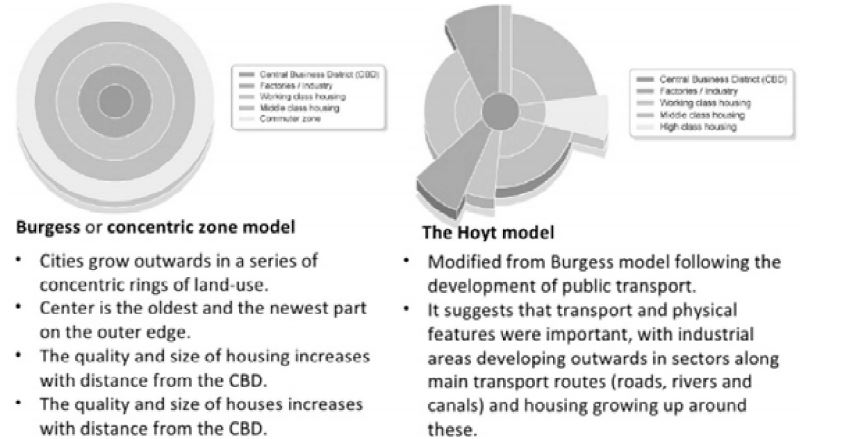-
Match the classical urban planning theories in Group-I with their proponents in Group-II.
Group-I Group-II P. Concentric Zone Model 1. Berry and Horton Q. Sector Model 2. Homer Hoyt R. Multiple Nuclei Model 3. Ernest Burgess S. Factorial Ecology 4. Shevky and Bell 5. Harris and Ullman
-
- P - 4, Q - 1, R - 3, S - 5
- P - 3, Q - 2, R - 3, S - 5
- P - 2, Q - 4, R - 5, S - 1
- P - 3, Q - 2, R - 5, S - 1
Correct Option: D

Harris and Ullman's Multiple Nuclei City Model (1945) M
This model does not assume that cities grow around a single CBD. Although the CBD is retained, additional nuclei are recognised. For example, industry may locate near to transport routes, such as major roads, canals, ports or railway lines. Some activities also repel one another, for example high-class housing locates far away from industry. The advantages of this model lie in its multinuclei approach. The model is rather flexible and adapts to local situations and can be modified to match the city under consideration.
Harris and Ullman’s multiple-nuclei model of urban land use 
1 CBD
2 Wholesale, light manufacturing
3 Low-class residential
4 Medium-class residential
5 High-class residential
6 Heavy manufacturing
7 Outlying business district
8 Residential suburb
9 Industrial suburb
All the above three are Urban land-use models.
Factorial Ecology is the sphere of study concerned with the differentiation of urban-social areas and the correlation analysis of relationships therein. Factor analysis has its origin in Psychology. Berry and Frank E. Horton are authors of a book called Geographic perspectives on urban systems that talks about social analysis and factorial analysis among other things. It builds upon social area analysis by Shevky and Bell.

